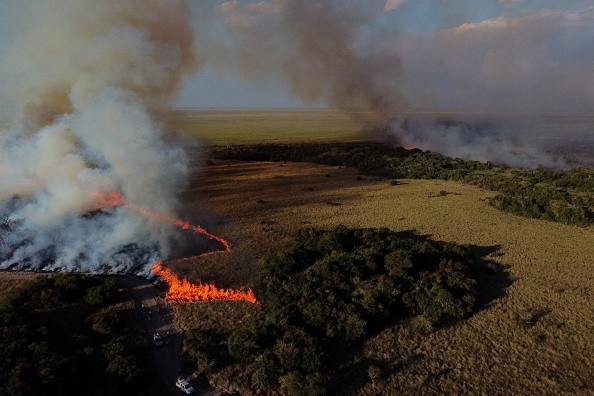The Australian wildfires last 2019 and 2020 were unprecedented in terms of how far and rapidly they spread, as well as how long and furiously they burnt.
The disastrous "Black Summer" fires scorched more than 43 million acres of land, killing or displacing approximately 3 billion animals.
The flames also released almost a million tons of smoke particles into the sky, reaching up to 35 kilometers above the Earth's surface - a mass and reach similar to an erupting volcano.
The wildfires release chemical compounds

MIT atmospheric researchers have discovered that the smoke from those fires triggered chemical processes in the stratosphere, which led to the depletion of ozone, which protects the Earth from incoming UV radiation, as per ScienceDaily.
The study, published in the Proceedings of the National Academy of Sciences, is the first to show a chemical relationship between wildfire smoke and ozone depletion.
The scientists saw a substantial decline in nitrogen dioxide in the stratosphere in March 2020, just after the flames had abated.
This is the initial stage in a chemical cascade that is known to terminate in ozone depletion.
The researchers discovered that the decrease in nitrogen dioxide is precisely proportional to the amount of smoke produced into the stratosphere by the fires.
They estimate that the smoke-induced chemistry decreased the ozone column by 1%.
According to a news release accompanying the study, the new study establishes the first direct link between wildfire smoke and ozone depletion, which probably stems from an initial actual clue.
According to The Hill, Solomon had that smoke from fires might deplete ozone through a chemical reaction related to that of volcanic aerosols.
He previously established that particles from these eruptions, which may reach the stratosphere, might deplete ozone in this way.
Examining chemical compounds to identify relations to ozone depletion
Massive wildfires are known to produce pyrocumulonimbus clouds, which may reach the stratosphere, the layer of the atmosphere between 15 and 50 kilometers above the Earth's surface.
The smoke from Australia's wildfires climbed as high as 35 kilometers into the stratosphere.
Pengfei Yu of Jinan University, Solomon's co-author, conducted second research of the fires' consequences in 2021 and discovered that the accumulated smoke warmed sections of the stratosphere by up to 2 degrees Celsius -warming that lasted six months.
The investigation also discovered evidence of ozone depletion in the Southern Hemisphere as a result of the fires.
Scientists planning on cloud injecting
The scientists examined nitrogen dioxide data from three separate satellites that have been monitoring the Southern Hemisphere. They then matched each satellite's record of the months and years preceding the fires to data from March 2020.
The researchers conducted atmospheric simulations using a worldwide, three-dimensional model that simulates hundreds of chemical interactions in the atmosphere, from the surface up through the stratosphere, to ensure that the nitrogen dioxide drop was a direct chemical result of the flames' smoke.
The team injected a cloud of smoke particles into the model to simulate the Australian wildfires.
They reasoned that the particles, like volcanic aerosols, accumulated moisture.
Furthermore, they then ran the model several times and compared the results to simulations that did not include the smoke cloud.
For the time being, the primary cause of ozone depletion is chlorofluorocarbons or CFCs substances such as outdated refrigerants that have been prohibited under the Montreal Protocol but persist in the stratosphere.
However, when global warming causes bigger, more regular wildfires, the smoke from these flames might have a major, long-term impact on the ozone.
© 2025 NatureWorldNews.com All rights reserved. Do not reproduce without permission.





